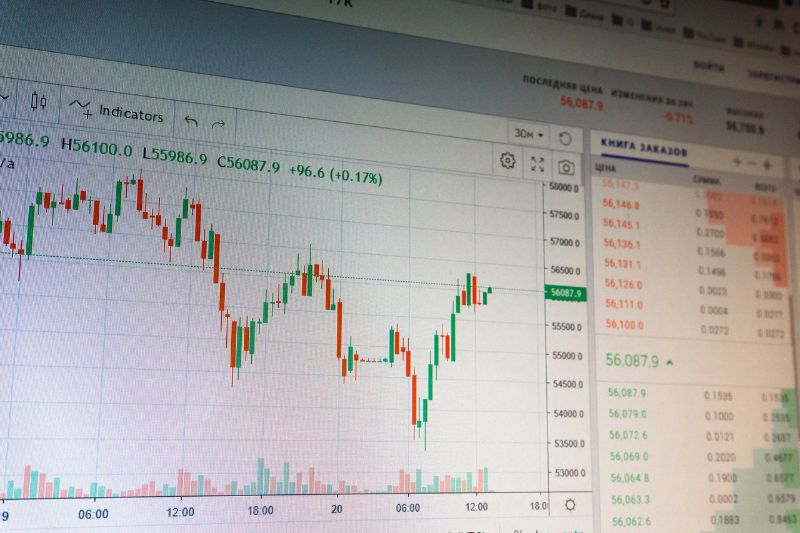To qualify for a dividend, you must have held the stock for at least a predetermined amount of time, known as a “holding period,” in domestic and certain eligible international firms.
What is the difference between qualified and non qualified dividends?
***Editor’s Note: This blog has been updated for correctness and comprehensiveness as of November 12, 2020.
Every investor hopes for a significant return on investment from their stock portfolio, but the truth is that dividends paid out from corporate stocks are not all created equal. As an investor’s return on investment (ROI) is heavily dependent on how dividends are taxed, understanding the various forms of dividends and their tax implications is critical.
Ordinary dividends can be classified as qualified or nonqualified. Nonqualified dividends are taxed at regular income rates, while qualified dividends are taxed at capital gains rates, which is the most significant distinction between the two.
This sort of distribution is most frequent in corporations and mutual funds, because they are paid out of profits and revenues. The following are examples of dividends that do not qualify for preferential tax treatment:
- Investment trust dividends are not taxed unless they meet particular conditions, such as the criteria of Section 857 of the Internal Revenue Code (IRC).
- Generally, master limited partnerships distribute dividends to their shareholders (However, if the MLP is invested in qualifying corporations and it receives qualified dividends from those investments, it would pass out qualified dividends to the partners)
- Mutual savings banks, mutual insurance companies, credit unions, and other loan groups provide dividends on savings or money market accounts.
In addition, qualified dividends paid out by American corporations are also eligible. However, the following requirements must be completed in order to meet Internal Revenue Service standards:
- An American or a qualifying foreign firm had to pay the dividends.
To understand these two rules, it’s important to keep in mind a few points of clarification. In the first place, a foreign firm is taken into account “In order to be regarded “qualified,” a company must be located in a country that has a tax treaty with the IRS and Treasury Department. For the reason that a foreign corporation may be classed in another way “Investors who want to know how dividends paid out by a foreign firm will be classified for tax reasons should consult a tax or accounting specialist.
For a dividend to receive favorable tax treatment, special holding rule conditions must be met by the recipient of the payout. A share of common stock must be held for at least 60 days during the 121-day period prior to the ex-dividend date in order to be eligible for dividends. When a company pays out dividends, the ex-dividend date is when new investors are no longer eligible for future payments. More than 90 days are required for preferred stock within the 181-day period prior to the company’s ex-dividend date.
Dividends and capital gains taxes were largely left untouched by the 2017 Tax Cuts and Jobs Act. Dividends and capital gains will no longer be taxed at 0% under the TCJA because of the new basic tax brackets. However, if you fall into the new 10% or 12% tax categories, dividends will be taxed at zero percent. People who qualify for the 15% tax rate under the TCJA will be taxed somewhere between 22% and 35% on the balance of their income.
The current election results may change this, however. The top long-term capital gains tax rate proposed by Trump is 15%. Individuals making more than $1 million a year would face a 39.6 percent tax on net long-term gains under Vice President Joe Biden’s plan. The 3.8 percent net investment income tax should also be applied to long and short-term capital gains taxes, according to Biden.
Do qualified dividends count as income?
However, while the vast majority of dividends paid out by corporations and mutual funds to shareholders are deemed ordinary dividends, some may qualify as qualified dividends. Rather than paying income tax on your dividends, they are subject to the capital gains tax rate, which is lower. Because they are included in the taxpayer’s adjusted gross income, qualified dividend income is taxed at a lower rate than ordinary dividend income..
What is a qualified dividend vs ordinary?
On the other hand, ordinary dividends are taxed at the regular federal income tax rates. For dividends to be considered “qualified,” they must meet strict IRS guidelines.
How do I know if my dividend is ordinary or qualified?
The 121-day period begins 60 days before to the ex-dividend date, therefore you must have held the shares for at least 60 days to qualify. A good rule of thumb is: If you’ve owned the stock for more than a few weeks or months, you are likely receiving the eligible rate.
Are Apple dividends qualified or ordinary?
Investors, on the other hand, must meet specific conditions before they may benefit from the lower tax rate. Investors are required to hold their investments for a set period of time. To qualify for a dividend, a share of common stock must be held for at least 60 days within the 120-day period prior to the ex-distribution date. This period begins 90 days prior to the dividend ex-date for preferred shares, and continues for a total of 180 days. For example, if Apple (AAPL) or Microsoft (MSFT) pays an investor a dividend and they meet the holding time requirements, then such dividends are eligible for qualification. For a dividend to be qualified it must be held for a certain amount of time (and thus taxed at the normal income tax rate).
What’s Qualified and What Isn’t
dividends provided by real estate investment trust (REIT) and master limited partnership (MLP), employee stock options, tax-exempt firms and savings or money market accounts are some instances of unqualified, and thus do not qualify for the tax advantage, payouts. If you’re in an Individual Retirement Account (IRA), you won’t be taxed on dividends or capital gains you earn from your investments, so this distinction isn’t really relevant. Finally, one-time dividends are not eligible for the tax-exempt status.
It is only when the parent company itself is recognized as qualified that the dividends of that foreign entity are also qualified. According to the IRS, if a foreign corporation is “incorporated in a possession of the United States, or eligible for benefits of a comprehensive income tax treaty with the United States that the Treasury Department determines is satisfactory for this purpose and that includes an exchange of information program,” it is considered to be a foreign corporation. There must be some sort of connection between the foreign company and America, or it must have a tax arrangement with the IRS and Treasury Department in place.
Are Microsoft dividends qualified?
Even though a dividend has been declared “qualified,” this doesn’t guarantee its inclusion in the upcoming Olympics. Dividends that qualify for the reduced dividend tax rate of the IRS are known as qualified dividends. If you get a qualified dividend, you may be exempt from paying federal income tax.
Do you know what qualifies a dividend as a “qualified dividend?” The IRS has all of the specifics on this, which you may access by contacting them directly.
Dividends paid by a U.S. company or a foreign enterprise in a country having tax arrangements with the United States are tax deductible, but that’s about it. If you hold Microsoft (MSFT) stock for more than 60 days throughout the 121-day period beginning 60 days prior to the ex-dividend date, that dividend is a qualifying dividend.
This also applies to ETFs (exchange-traded funds). Dividends paid on U.S. company shares held by an ETF are almost certainly tax-free.
In many circumstances, dividends from some of the most common assets are not considered qualifying dividends. It is important to note that a number of bond ETFs, as well as a number of emerging-markets and real estate investment trust ETFs, all pay out regular dividends.
It is vital to know which dividends are eligible and which are not. Unqualified dividends, on the other hand, are taxed at your regular income tax rate, while qualified dividends are subject to the lower capital gains rates.
Where do Qualified dividends go on 1040?
Be sure to use the Qualified Dividends and Capital Gain Tax Worksheet provided in the instructions for Form 1040 to compute the tax on qualified dividends at the selected tax rates.
Is AT&T a qualified dividend?
Using Qualified Dividends in C-Corps and U.S. Mutual Funds to Reduce Taxes. As a starting point, consider the most straightforward and popular type of dividend paid by C-corporations such as AT&T (T) and Johnson & Johnson (JNJ) (T). Box 1B of the tax form 1099-DIV lists qualified dividends.
Where do non qualified dividends go on 1040?
- Line 3b of Form 1040, U.S. Individual Income Tax Return, Form 1040-SR, U.S. Tax Return for Seniors, or Form 1040-NR, U.S. Nonresident Alien Income Tax Return, includes the ordinary dividends from box 1a on Form 1099-DIV, Dividends and Distributions.
- If you’ve received a Form 1099-DIV with a qualified dividend in box 1b, you can enter it on line 3a of your tax return.
- Refer to the instructions for the recipient of Form 1099-DIV attached to your form and the instructions for Schedule D to determine where to disclose additional amounts on your Form 1099-DIV.
- Form 1040 and Form 1040-SR or Form 1040-NR instructions should be used if your only capital gains and losses are from capital gain distributions.
- Schedule B (Form 1040), Interest and Ordinary Dividends, must be filed if you received more than $1,500 in ordinary dividends or if you got ordinary dividends in your name that actually belong to someone else. Please refer to the Instructions for Form 1040-NR when filing Form 1040-NR for relevant reporting information.
Are ADR dividends qualified?
In order to qualify as dividends, they must come from a publicly traded company’s stock. If a portion of the distribution is carried through as ordinary income, it is not deemed qualifying dividend income for real estate investment trusts and master limited partnerships (MLPs). Investors who use American Depository Receipts to gain access to overseas assets as part of a global strategy can count most of the dividends they receive as qualifying.






